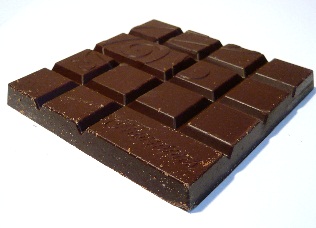Somehow, knowing the face of the person who will probably be arriving in your room made it all a little less scary.
He saw approximately 25 min of an 'Ordering decimals' lesson with a Year 9 class.
At the end he gave me a little card with his name on and a time and place to meet for feedback - again, a nice touch I thought. We spent just over 5 minutes chatting about it - he also wanted to know a little bit about my professional background.
Here are the things that I can remember he said he liked (in no particular order):
#1 The 'engaging hook' was a selection of Simpsons characters on scales where we had to read off their heights eg 1.7 , 1.25 - I'd like to be able to credit the person for the pictures but unfortunately I don't know the original source.
#2 Me: "1.7 whats? Learner: "I don't know." Me: "mm? cm?" One of the learners: "Metres!" Then asking students to estimate a metre with their arms, digging out a measure and seeing which student was closest. Weird how there are some cute bits that you could never plan for or predict!
#3 Once we'd decided how tall they were - with a nice bit of discussion going into 2dp - 6 students then came out wearing the characters on their 'Headbandz' (use them for all sorts - taboo, multiplying by 10, 100 etc). One of the boys wore his for the rest of the lesson :)
#4 They had to put themselves in 'ascending' order - he liked the literacy discussion we then had around that and the word 'descending' - although apparently I went the same way for that! I blame the pressure - I do know the difference, honestly!
#5 Seating plan with LOTS of colour-coded information on - FSM, G&T, KS2, SEN, Targets. He wanted to know if I could identify Pupil Premium students. I made it using lookup tables from SIMs marksheets and will share when I've tidied it up a bit.
#6 Self-selection of which questions they wanted to start with - I then went round and moved them on or checked understanding with them
#7 Quickly-built relationships for the beginning of the school year and students I hadn't known previously - joined the school at Easter.
#8 Self-selection of which questions they wanted to start with on the worksheet - I'd 'graded' them 'Core, Extension, Head-Hurters and Killers'
#9 Humour - we all managed to laugh quite a bit despite our visitor (he smiled a few times too!)
#10 Challenging learning for, as he put it, a 'Lively class of that ability'
#11 I was helping them to learn through true understanding - not by rote or a technique they could use but didn't understand.
Ideas for improvement - I really like the suggestions he made:
#1 Use a graph drawing package to keep zooming in on the number line to see the number of decimal places increasing and going on for ever
#2 When the learners stood in a line putting a 1m and 2m marker up and asking them to stand where they thought they were relatively.








































